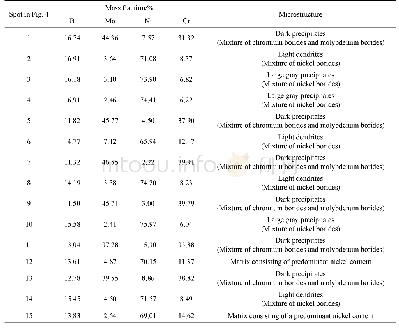《Table 3.Hardness of the used alloy after imposition of differ-ent passes of TCP》
 提示:宽带有限、当前游客访问压缩模式
提示:宽带有限、当前游客访问压缩模式
本系列图表出处文件名:随高清版一同展现
《Microstructure evolution of a recycled Al-Fe-Si-Cu alloy processed by tube channel pressing》
As shown in Table 3,an extensive increase in hardness of the used alloy occurs after one pass of TCP.This extensive increase in hardness is mainly attributed to a reduction of the grain size as well as to an increase in dislocation density;these effects are the main strengthening mechanisms of dilute Al alloys subjected to SPD processing[29,31].Compared with this extensive increase in hardness of the alloy,the increase in hardness induced by additional TCP passes is small.This effect is due to an increase of the limited dislocation density and to grain-size reduction through further TCP passes,as previously mentioned.However,the question arises:If the dislocation density and the grain size of the alloy remain almost constant after four TCP passes,why does the hardness increase after eight TCP passes?To answer this question,we refer to the fragmentation of Al Fe Si particles through TCP processing,especially after eight passes.Note that the fragmentation of particles causes the appearance of an extra number of finer particles,which results in an additional strengthening effect according to the Orowan mechanism[29,32-33].
| 图表编号 | XD002879000 严禁用于非法目的 |
|---|---|
| 绘制时间 | 2018.10.01 |
| 作者 | M.H.Farshidi、M.Rifai、H.Miyamoto |
| 绘制单位 | Department of Materials Science and Metallurgical Engineering, Ferdowsi University of Mashhad、Department of Mechanical Engineering, Doshisha University、Department of Mechanical Engineering, Doshisha University |
| 更多格式 | 高清、无水印(增值服务) |
查看“Table 3.Hardness of the used alloy after imposition of differ-ent passes of TCP”的人还看了
-

- Table 1 Microstructural characteristics of investigated Ti2AlNb alloys after different heat treatments





